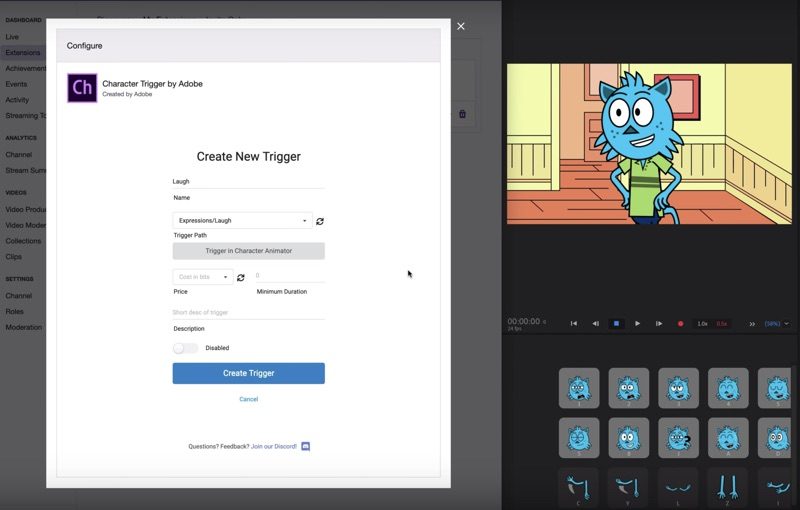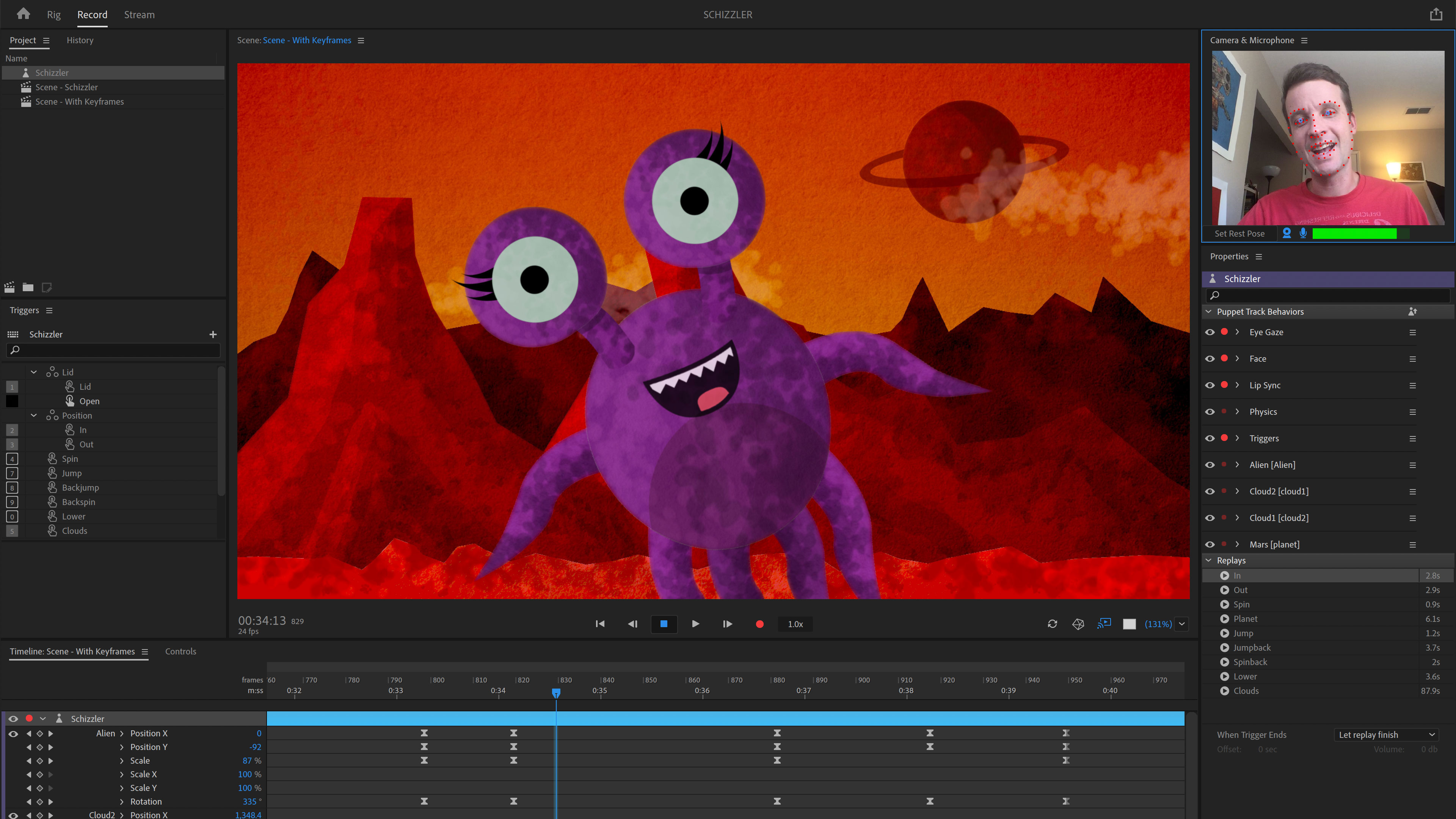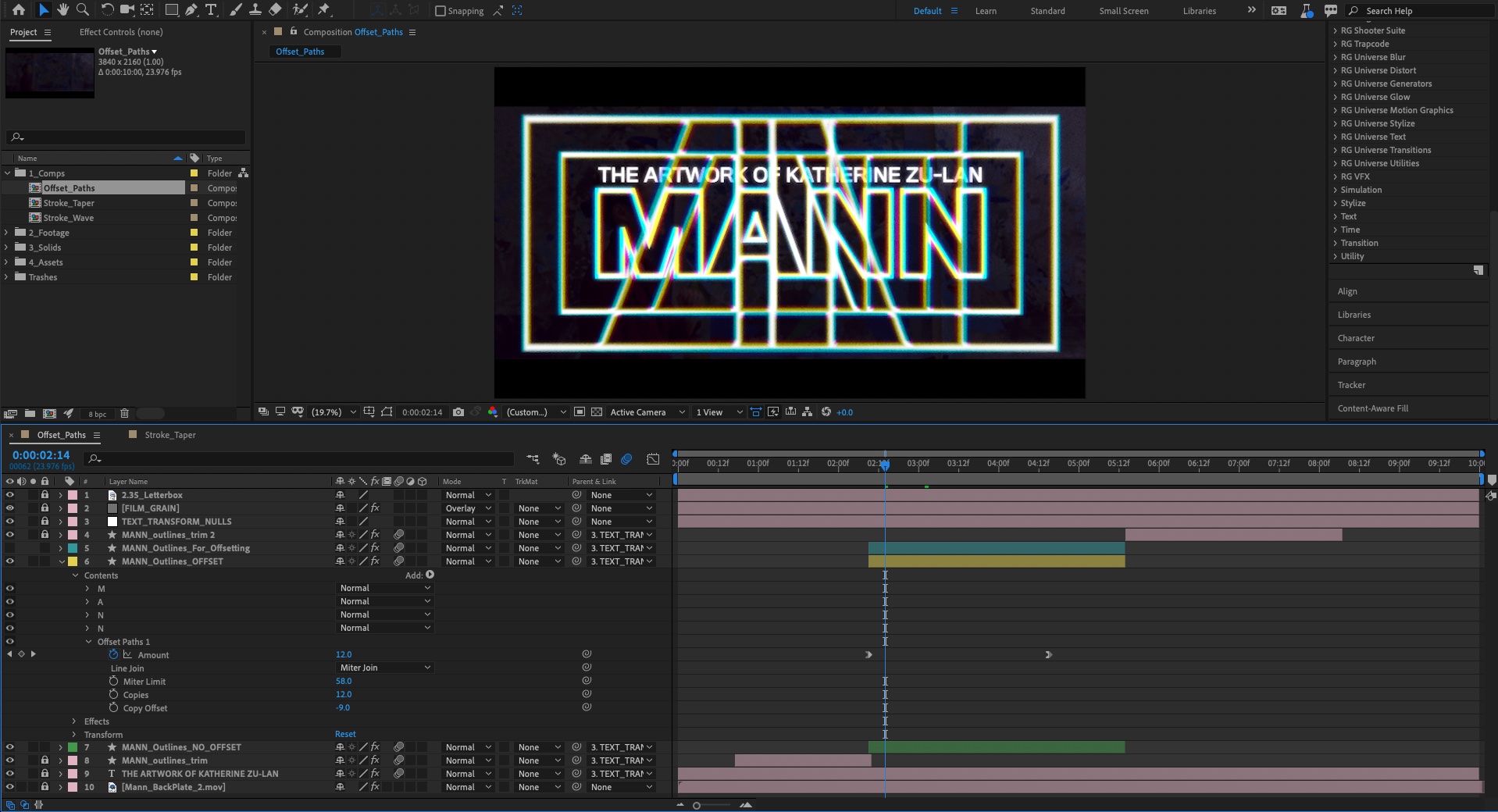Character Animator is a character animation application that allows you to bring expressive characters to life using your own artwork.
- Adobe Character Animator After Effects
- Character Animator After Effects Download
- After Effects Character Animator Plugin
- After Effects Character Animator
- Character Animator After Effects Free

Adobe Character Animator After Effects
Adobe Character Animator allows you to import artwork from Adobe Photoshop or Adobe Illustrator, and breathe life into them. You can do so by first capturing your performance using a camera and microphone. While you're performing, Character Animator reproduces your facial expressions, synchronizes mouth movements to your speech, and provides complete control over all aspects of a character’s movement.
Just do characters in Character Animator and do props and landscape in after effects? Any type of advice how which parts of an animation you guys do in which application would be great! Get up and running with Character Animator, the motion capture animation tool in After Effects CC. Character Animator can speed up your character-driven animation projects exponentially—eliminating keyframes and time-consuming dialog matching. AE Guru Ian Robinson starts you off by working with Character Animator templates.
You can animate a character that you’ve acquired from someone else, or you can rig your own characters based on your own artwork from Photoshop or Illustrator. You can even write your own behaviors or use existing behaviors from elsewhere.
Adobe Character Animator is installed along with After Effects CC 2015. However, it is a stand-alone application, and can be launched separately outside After Effects, too.
For information about the latest version of After Effects, see New Features Summary.
Using Photoshop or Illustrator, create a multi-layered document representing the structural pieces (head, eyes, mouth, arms, legs, and more) of a character. If you have created a character already, skip to the next section to learn how to import your artwork into Character Animator.

In Character Animator, choose File > Import to browse to and select your artwork file.
The selected artwork is imported and a puppet representation, created from its layers, appears in the Project panel. The structure of the artwork in a Photoshop or Illustrator document determines the structure of the puppet within Character Animator. Some features of the puppet can be swapped between different variations or replacements (for example, different mouth expressions for a character can be separate layers in the document). You can create a custom puppet rig structure, including replacements, within Character Animator. Your original artwork need not be modified.
With the puppet selected in the Project panel, click the Add to New Scene button to place it in a new scene. The scene is automatically opened in the Scene panel, and the puppet you just added is selected in the Timeline panel.
A scene contains puppets. When a scene is opened in the Scene panel, you can set the initial placement of puppets in the scene, and animate them over time.
Look at your character in the Scene panel, place your face at a comfortable distance from the webcam (but big enough within the circle shown in the Camera & Microphone panel), make a neutral facial expression, then click Set Rest Pose. Red tracking dots will appear on your face.
If your puppet had specially named layers (for example, Head, Left Eye, Mouth, and so on), you can control it by making different facial expressions in front of your webcam. If your puppet’s feet had specially named guides, they could be dragged with the mouse.
A puppet has behaviors, capabilities that let you control its movement, deformation, appearance, and other attributes. Some behaviors use external controls, such as the webcam or audio or mouse input. It is behaviors that allow for expressive control of your static artwork.
If you don’t want the character’s head to scale or rotate, then decrease the Head Position Strength and Head Scale Strength parameter values for the Face behavior in the Properties panel. Try shifting the character closer to the center of the scene by increasing the Position X parameter value for the Transform behavior. Hold down the Shift key while scrubbing the value for larger changes.

Most behaviors have parameters that let you customize the results. The source (master definition of a) puppet appears in the Project panel, with instances of the puppet in a scene. The parameter values for the source puppet are the defaults for all instances, but you can override those values for each instance.

Character Animator After Effects Download
- In the Properties panel, click the Arm for Record button (small red circle) next to both of the Mouse Tracker and Keyboard Triggers behavior’s names to disarm them.
- Leave the Face and Lip Sync behaviors armed so that changes to those behaviors during recording will be captured.
- Click the red Record button at the bottom of the Scene panel, and begin your performance (move your head, look around, blink, talk, and more).
- Click Stop to finish recording.
Armed behaviors are identified with a small red circle and in red text. The selected puppet’s track is also armed for record (the background of the puppet’s name in the track header on the left side of the Timeline panel is red), meaning the armed behaviors on that selected puppet will be captured. By selecting a puppet, and thereby arming it at the track level, you can capture a performance of it in the scene.
After Effects Character Animator Plugin
The performance is captured as a take for the Face and Lip Sync behaviors. By default, a puppet’s track is collapsed, but you can identify when in time a performance has been captured by the light-colored bar along the bottom of the puppet track item’s bar. If you click the disclosure triangle to expand the puppet track, you will see the individual recorded takes for the armed behaviors. Because the Microphone Input was also enabled during recording, any detected audio is also captured as a WAV file, and appears as an audio track in the timeline.
- Click Play or press the spacebarto preview your recording.
- Click Stop (or press the spacebar again), then Go to Start when done.
You can view recorded takes during playback. The current-time indicator moves across time during playback, but you cannot move it manually at this time. After the second recording, a Mouse Tracker take bar appears (if the puppet track was expanded), but no additional audio track item appeared. If you played the scene’s timeline now, you would see the combination of both recordings.
- Select the scene in the Project panel, then adjust the scene’s Duration to 10 seconds (or as long as you recorded your two takes) in the Properties panel.
- Choose File > Export > Scene, then specify a location and name on disk for the performance.
After Effects Character Animator

Character Animator After Effects Free
The duration of the scene, appearing as a highlighted section of the Timeline panel, controls the number of frames to export. The takes you recorded are exported as a PNG sequence (with alpha for compositing) and WAV file for recorded audio. The duration of the exported content is determined by the Duration parameter of the scene in the Properties panel.
- In After Effects, choose File > Scripts.
- Choose File > Scripts, then select New Comp from Character Animator Recording.jsx.
- Select the first PNG file in the exported recording’s folder.
- Preview the composition to see the results.
If you need to make a change to the puppet, you can edit it back in Character Animator and any artwork changes back in Photoshop or Illustrator. Your changes can flow back down to After Effects.
More like this
Beginner Tutorials
| Card Wide |
|---|
Getting StartedThis is a simple walkthrough of creating a basic character in Adobe Character Animator. After going through this tutorial, you should be able to create an animated character with head tracking, responsive eyes and eyebrows, real-time lip sync, and a body with draggable limbs. |
Recording & EditingRecording in Character Animator is as simple as pressing the red record button, but this tutorial digs a little deeper into the best techniques for recording and editing, such as arming & disarming behaviors, blending multiple performances together, and perfecting lip sync tracks. |
TriggersTriggers are a critical part of any puppet made in Adobe Character Animator, allowing you add emotions, props, and animated sequences on demand. We’ll set up some simple triggers to turn lights on or off, swap between different hand positions, explore what happens when you trigger a group with a behavior, and finish with Face Triggers, adding eyelids, sad mouth sets, and other features to give a face more dynamic range. Download the example project here. |
BehaviorsBehaviors are what bring your puppets to life in Adobe Character Animator. The Lip Sync behavior tracks your voice, the Eye Gaze behavior tracks your pupil movements, and so on. In this overview video we’ll quickly preview all of the currently available behaviors and give a brief example of what they do. Get more detailed info about each behavior at adobe.com/go/chhelp_behaviors. |
Creating an Animated LivestreamIn this tutorial we’ll show you how to build and stream a live animated character on places like Twitch, YouTube, and Facebook. “Live animation” seems like an oxymoron, but it’s now possible with Adobe Character Animator. Download Bluster at adobe.com/go/chexamples. |

Comments are closed.